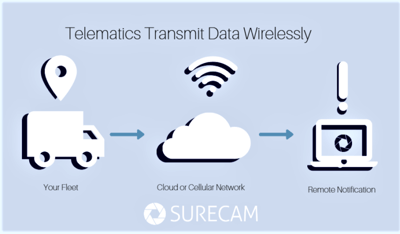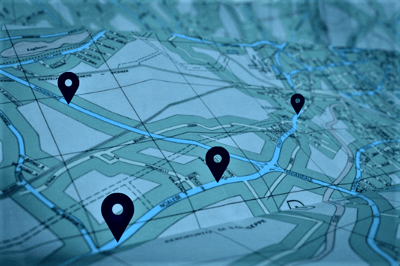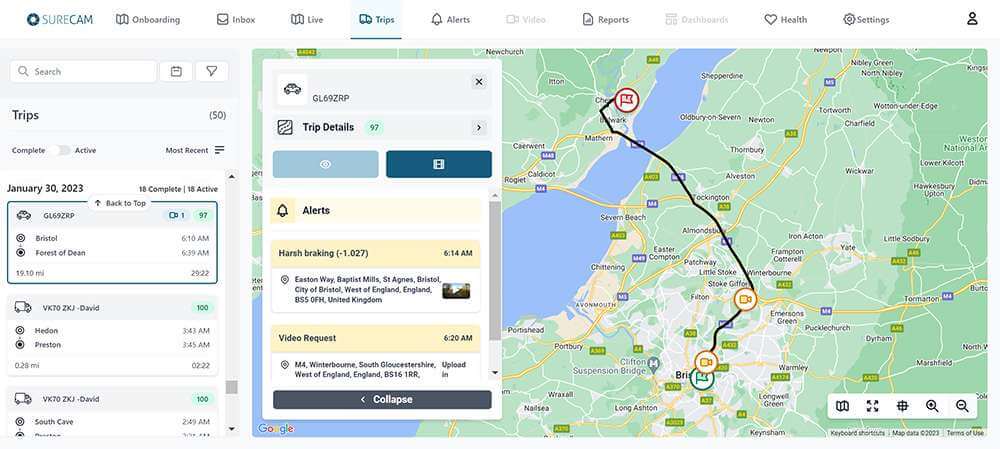GPS Telematics vs. Video Telematics

 Telematics: GPS and Video. What's the Difference?
Telematics: GPS and Video. What's the Difference?
The popularity of fleet monitoring technology has been on the rise for years. This steady pace has continued through the recent Electronic Logging Device (ELD) mandate when electronic logging devices became mandatory for commercial fleets in the United States. Since then, telematics technology has allowed businesses to gain valuable new insights into how their fleets are operating on the road, and they have evolved into the basis for modern fleet management practices.
As in-vehicle technology has evolved over time, many different kinds of telematics devices have become available so you can find the best possible option to fit your fleet. Telematics devices alone offer a lot of information through GPS tracking capabilities but pairing them with other devices – like video-based technology – can offer even more value. Let's break down these two types of technology below to help understand the pro's and con's of each.
What is Telematics?
First, let's take a look at exactly what the word "telematics" means. Telematics is the combination of the terms informatics and telecommunications. It is broadly used to describe information about your fleet that is collected and transmitted wirelessly. You could think of it as a long-distance telecommunications for anything related to your vehicles.

Once collected, this information is transmitted through cellular or satellite network and can provide instant feedback on any remote asset. For some time, a standard component of telematics has been GPS as many of these features were already included with ELD installation. When used strategically, this data has proven to be very helpful for fleet management professionals.
Telematics and GPS
GPS telematics devices can determine the location of a remote asset, preferably in real time. This data can be presented and interpreted in a number of ways including:
- Real-Time Vehicle Location Tracking
- Vehicle Route Tracking (Vehicle Bread Crumb Trails)
- Idling Times
- Trip Reports
- Timing and Location of Stops
Being able to analyze this information can give you insight into your operations and it can arm you with the information you need to streamline your practice, improve fuel efficiency, and cut unnecessary costs.
For example, if you are looking to improve route efficiency, you can act as a dispatcher for your team by accessing their location and warning them of bad road conditions, traffic, or inclement weather. You can also consider looking into how frequently you see idling and harsh braking and use this information to coach your team to adopt safer and more efficient driving habits.

The location feature can also add an extra layer of security as it allows you to track and locate your vehicles in the event of theft. The GPS features of a telematics system are incredibly helpful in understanding your drivers and keeping an eye on the locations of your assets. Other technology platforms can integrate with your existing telematics systems to add additional value to your business, like Video Telematics.
Video Telematics
Video Telematics can give you even more helpful information about your fleet's activity on the road such as firsthand evidence of what happens in the event of an accident. You can then use this footage to:
- Reduce false claims
- Exonerate drivers by providing proof of innocence
- Submit timely First Notice of Loss (FNOL) reports
- Coach and onboard new drivers
- Recognize your team for safe driving behavior
For example, if one of your drivers gets in an accident on the road, with traditional GPS tracking you might receive a notification through your telematics system. It would notify you of the time and place that the incident occurred, but you wouldn't have any further insight into the situation. This lack of visibility can often result in a costly false claims battle, an issue affecting fleets at record highs today.
The addition of a video telematics solution like a connected dash camera can provide you with a firsthand account of how the accident actually happened. Not only does this footage have the ability to help stop false claims and protect your team, but you could also take the footage and use it to coach your drivers into safer driving habits, recognize exemplary driving, and help train new drivers on how to best respond to dangerous incidents.
Connected Dash Cameras with GPS Tracking
Some telematics packages offer a combination of features that can streamline your data management efforts while simultaneously providing you with helpful information about your fleet. This can be an ideal option for short–haul drivers or fleets that may not have ELD requirements but are still looking to invest in telematics technology to help manage and protect their team.
For example, SureCam's fleet video monitoring solution bundles GPS and video capabilities so you can have access to driving notifications like harsh braking, vehicle tracking, and accident alerts bundled with instant video footage for coaching, FNOL submission, and claims reduction. Both the standard GPS tracking capabilities and video monitoring is done through a single dash camera device.
Through a connected dash cam with GPS tracking capabilities, you can get all the information a larger fleet would have access to and you can have the added benefit of tailoring your technology package to the specific needs of your fleet.
Even without an ELD, there are many ways to use modern telematics technology to help manage your team.
What Telematics Package Is Right For Me?
As each year passes, investing in a quality telematics package has become more and more important for businesses with fleets. With such a high record of false claims and insurance premiums on the rise, having the ability to protect your team and set them up for success is paramount to getting ahead in the modern market.
Bundling a few different telematics option like video and GPS can allow for the additional security your team needs while still maintaining ease of operations and avoiding being bogged down by unnecessary data.
Curious about telematics capabilities for your fleet? The SureCam team is happy to help run through different options to help you find the best solution for you.

Book a demo today!
SureCam offers GPS vehicle tracking, live video, and real-time alerts for efficient fleet management. Get a Demo


